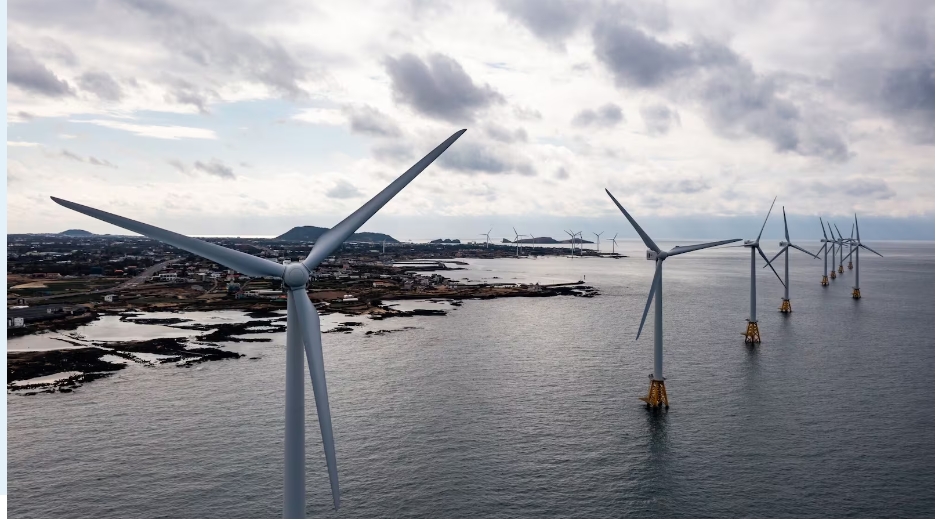
Together, the firms pledged $22 million in winning bids for four of the eight leases that were up for grabs near Massachusetts. The small showing — after 14 companies initially prequalified to participate — and the relatively small average bids of $50 per acre, come amid mounting concerns about political risk hanging over the US offshore-wind industry. Analysts said the sale results also may reflect the technical prowess — and relatively untested floating-wind technology — that will be necessary in the deep waters of the Gulf of Maine.
“Prevailing macroeconomic pressures, the nascency of floating wind turbines and a possible Trump administration very likely softened interest among potential project developers,” ClearView Energy Partners LLC said in a research note to clients.
Republican presidential nominee Donald Trump, a longtime critic of wind turbines, has escalated his attacks on the campaign trail, even threatening to target the sector with “day one” action if he wins a second term in the White House. Democratic nominee Kamala Harris has not outlined detailed energy policy plans but is largely expected to continue the trajectory charted under President Joe Biden, who has overseen the government’s approval of 10 commercial-scale offshore wind projects.
Avangrid Renewables LLC pledged $11.2 million for two leases about 29.5 nautical miles from Massachusetts. Invenergy NE Offshore Wind, meanwhile, bid $10.8 million for two other leases about 21.6 nautical miles from the state.
Developing any US offshore wind project is a multiyear process involving federal environmental assessments, coordination with local officials and a suite of government permits. The projects in the Gulf of Maine’s deeper waters are likely to require additional government scrutiny of floating-wind technology not yet brought to bear commercially in the US.
The sale is “a pivotal moment for floating offshore wind,” said Hillary Bright, executive director of the Turn Forward group, which is advocating the development. “With these new leases in hand, developers can continue to advance transformative offshore-wind projects for New England.”